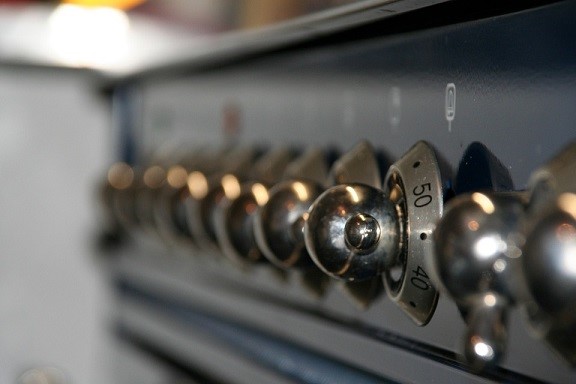If your oven is taking longer to heat up or you find your meals aren’t cooking evenly, it may be due to valuable heat escaping from your oven.
If your cooker is unusually venting heat, the most common cause of this issue is a worn oven gasket. The gasket operates as a seal, insulating your oven and preventing the hot air from escaping.
Naturally, any wear and tear to this seal will likely result in a dip in performance, not to mention a potential hazard, causing your oven to run less efficiently.
If this sounds familiar, don’t get hot under the collar or blow a gasket yourself – help is at hand!

Prepare for the Worst
Like any kitchen appliance, an oven won’t last forever. Sadly, when it comes to oven cooking, Sod’s Law will usually dictate that your cooker will go to pot at the least convenient time.
Nevertheless, there’s never a good time to receive bad news, so the best way to limit the impact is to get ahead of the curve and prepare for the inevitable.
It can be wise to inspect your oven regularly, particularly at the first sign of an issue. This can help you to pre-empt a major fault and allow you to rectify the problem before your oven becomes completely unusable.
Diagnosing a Faulty Door Seal
While it can be both annoying and frustrating when your oven seal does eventually go down, it can also be largely foreseen if you know what to look for.
The tell-tale signs of a faulty gasket range from an unusually hot outer door to melted cooker knobs. Meanwhile, it could be something as simple as undercooked food.
If you spot any of the above, be sure to check the seal for any obvious signs of wear or damage. Cracked, split or eroded seals are not fit for purpose.
Next, turn the oven on and inspect the perimeter of the door for escaping heat. If heat is unusually permeating from the door, you’ll need to replace the gasket.
These steps should help identify any issues with the seal; however, if no seal issues are evident, you may want to enlist the help of an expert.
Replacing a Door Seal
Once you have identified the problem, your next port of call is to take appropriate action. For a broken seal, replacement is in the best place to start.
Luckily, replacing a cooker seal is fairly straightforward. Simply head over to our dedicated section of oven door seals and gaskets, locate the model required using our easy-to-use search tool and order your replacement door seal.
Once your substitute seal has arrived, it’s time for out with the old and in with the new!
Remove a Damaged Door Seal
Before you go any further, be sure to unplug your oven or switch it off at the mains. If your oven is hot, wait for it to cool before you attempt any repairs.
Once it’s safe to do so, remove the damaged seal by opening your oven door and locating the gasket. This will either be on the door itself or on the outer border of the oven opening.
The seal will often be held in place by small clips or pins at select points (often the corners). These can be easily removed by gently wiggling them out of place.
Once removed, prise away at the meshy perimeter to loosen it from the oven wall and proceed to gently pull away in a methodical manner.
Working around the boundary of the oven, pull away until the seal has been completely removed.
Fitting a New Door Seal
To replace the oven seal/gasket, you have to effectively work in reverse. With that mindset, feed the seal around the perimeter so that the pins/clips line up with the relevant holes.
Fasten the clips into place and ensure that the remaining lining is nestled comfortably in place around the outside.
Once the new gasket is securely in place and the clips have been fastened into their corresponding holes, feed any remaining excess into the two bottom holes provided to create the full air-tight seal.
For more information on replacing a cooker seal of replacing an oven gasket, why not drop us a line? Call now on 02920 452 510 or get in touch online using the button below.
Get in Touch